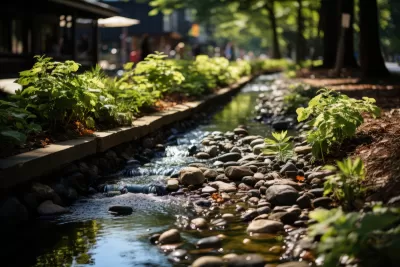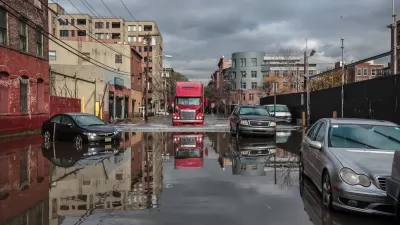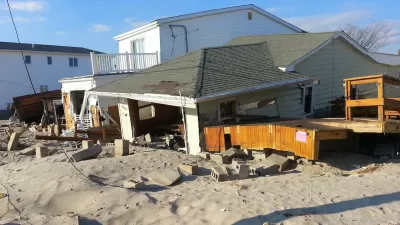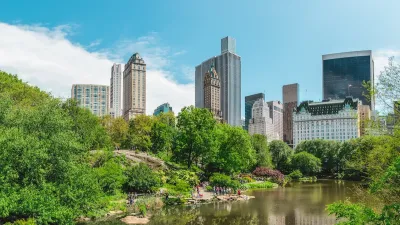A new loan program reduces the bureaucratic hurdles to implementing small-scale climate adaptation projects.

An article by Jake Bittle in Grist describes a new loan program for climate adaptation projects that specifically aims to support small-scale projects in smaller towns and tribal communities. “This way, not only can local officials representing small towns, minor cities, and tribes skip the extensive application process associated with federal grants, but they also don’t have to justify their projects in cost-benefit terms.”
The program could help speed up smaller adaptation projects that could have a significant impact on their community’s ability to withstand extreme weather events and climate change, reducing the red tape that communities must navigate for most federal grant or loan programs. Bittle explains that “Because states themselves will be running the loan programs, rather than the federal government, borrowers won’t have to worry about following the extensive federal spending guidelines that often hamper adaptation projects, or about passing a strict cost-benefit analysis.
According to Bittle, “The agency is piloting the program by sending $50 million in ‘seed capital’ to seven states — Louisiana, Maryland, Michigan, New Jersey, New York, South Carolina, and Virginia — as well as Washington, D.C. The states will get about $6 million each, and they’ll be able to loan that money out to smaller governments at interest rates of less than 1 percent.”
FULL STORY: FEMA rolls out climate adaptation loans for small and overlooked communities

Planetizen Federal Action Tracker
A weekly monitor of how Trump’s orders and actions are impacting planners and planning in America.

Congressman Proposes Bill to Rename DC Metro “Trump Train”
The Make Autorail Great Again Act would withhold federal funding to the system until the Washington Metropolitan Area Transit Authority (WMATA), rebrands as the Washington Metropolitan Authority for Greater Access (WMAGA).

DARTSpace Platform Streamlines Dallas TOD Application Process
The Dallas transit agency hopes a shorter permitting timeline will boost transit-oriented development around rail stations.

Parks: Essential Community Infrastructure — and a Smart Investment
Even during times of budget constraint, continued investment in parks is critical, as they provide proven benefits to public health, safety, climate resilience, and community well-being — particularly for under-resourced communities.

Porches, Pets, and the People We Grow Old With
Neighborhood connections and animal companions matter to aging with dignity, and how we build can support them. Here’s a human-scale proposal for aging in place.

Single-Stair Design Contest Envisions Human-Scale Buildings
Single-stair building construction is having a resurgence in the United States, where, for the last several decades, zoning codes have required more than one staircase in multi-story housing developments.
Urban Design for Planners 1: Software Tools
This six-course series explores essential urban design concepts using open source software and equips planners with the tools they need to participate fully in the urban design process.
Planning for Universal Design
Learn the tools for implementing Universal Design in planning regulations.
City of Charlotte
Municipality of Princeton
City of Camden Redevelopment Agency
City of Astoria
Transportation Research & Education Center (TREC) at Portland State University
US High Speed Rail Association
City of Camden Redevelopment Agency
Municipality of Princeton (NJ)





























